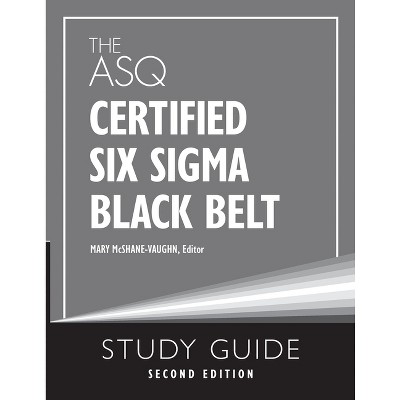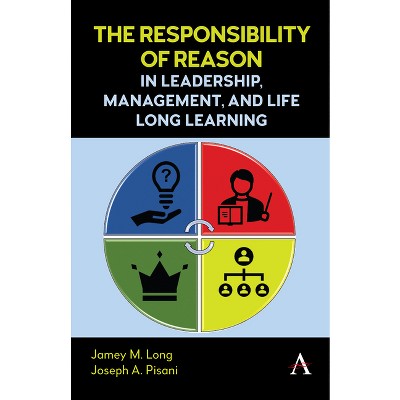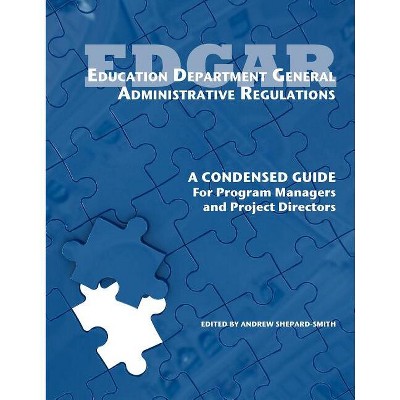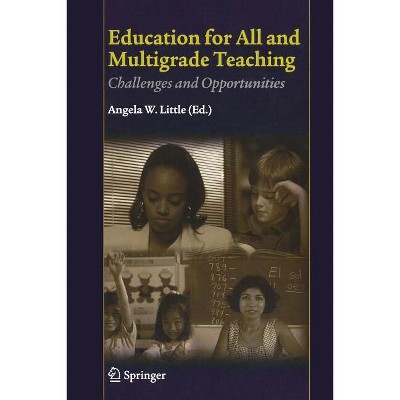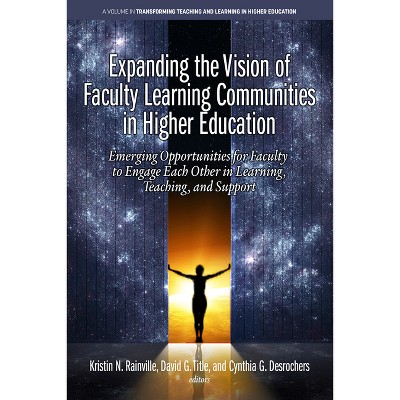Sponsored

The Miss(ed) Opportunities of Teaching with the Department of Education - by Jamey M Long (Hardcover)
Pre-order
Sponsored
About this item
Highlights
- Discusses the decline of U.S. education and proposes reforms to address inconsistent standards, weakened teaching, and ineffective federal policies In recent years, the United States has experienced a decline in education, a trend that contradicts the incline of advancements seen in other countries around the world.
- About the Author: Dr. Jamey M. Long is a professor at George Mason University and a business teacher at Prince William County Schools.
- 250 Pages
- Education, Administration
Description
About the Book
To inform and engage a broader audience about the stakes involved in educational mismanagement from an education and business perspective.
Book Synopsis
Discusses the decline of U.S. education and proposes reforms to address inconsistent standards, weakened teaching, and ineffective federal policies
In recent years, the United States has experienced a decline in education, a trend that contradicts the incline of advancements seen in other countries around the world. This decline presents substantial threats to the future of the United States that affect academic performance along with economic growth and social structure. This book examines the various and intricate reasons behind this trend of rapid decline while providing knowledge for educators (teachers and administrators), policymakers, and other stakeholder groups committed to improving the American education system and explaining the impact of the Department of Education and why it is no longer needed in its current state.
One of the main reasons for the educational decline is the inconsistency in educational standards across states and school districts created by the Department of Education that began in 1980. Different countries that maintain consistent national standards, the United States operates under an uneven system that often prioritizes local governance over uniformed results. This inconsistency leads to large differences in the quality of educational quality as some students receive a below-average education based on geographic location rather than what their potential allows. This book explains how this lack of standardization has contributed to significant gaps in knowledge and performance, especially related to the disadvantaged student populations.
The quality of teaching has been another crucial factor that plays a role in the disintegrating educational standards created by the Department of Education and their initiatives. In many circumstances, teachers and administrators face tremendous challenges that include high student-to-teacher ratios, limited resources, and inadequate professional development opportunities. These factors restrict their ability to effectively engage and educate students. This book investigates the systemic issues affecting teacher recruitment and retention, discusses how low pay, a lack of support, and high burnout rates contribute to a teaching workforce that often fails to meet the needs of its students. By addressing these critical gaps, we can begin to understand how to attract and retain quality educators who can drive student success within the United States.
Administrative practices and policies within school systems also have an undeniable impact on educational outcomes. Bureaucratic barriers often dampen innovation and limit the autonomy that schools need to adapt to their unique challenges. This book analyzes the complicated relationship between local administrations and broader educational policies set forth by the U.S. Department of Education. Next, it discusses how strict compliance-focused environments can prevent creativity and responsiveness in classrooms that ultimately undermine the very goal of education that is to prepare students for success in an ever-changing world.
The role of the U.S. Department of Education cannot be overlooked. While focused on improving education nationwide, federal policies have at times implemented unrealistic expectations and mandates without adequately considering the diverse environment of American education. This book analyzes these policies and offers a plan for reform, emphasizing the need for flexibility and local context in educational standards and assessments. As a result, this perspective is necessary for creating an environment that encourages schools to thrive rather than just survive.
About the Author
Dr. Jamey M. Long is a professor at George Mason University and a business teacher at Prince William County Schools. He possesses two doctorates in business administration and educational leadership and administration. Dr. Long has been nominated as faculty member of the year. Dr. Long holds two doctorate degrees in Educational Leadership & Administration and Business Administration and owns three small businesses and serves in his community.
Shipping details
Return details
Frequently bought together

Trending Non-Fiction








